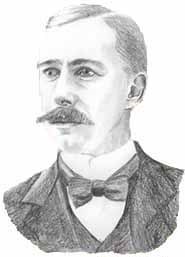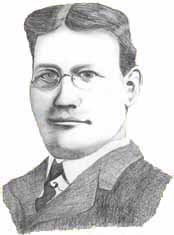|
In 1901 Abraham Lincoln Fellows and William W. Torrence made the first successful expedition through the Black Canyon of the Gunnison. Their purpose was to locate a site for a tunnel to divert water from the river to irrigate the lands of the neighboring Uncompahgre Valley. A journey the year before, with the same purpose in mind, ended in near disaster when the five men abandoned their effort and scrambled to the rim. Though many had looked to the canyon as a source for irrigation water, it was the arduous and successful trip made by Fellows and Torrence that moved the effort from merely an ambition to reality. Abraham Lincoln Fellows 
Copyright Jan Bradford Forge of Experience He often rode out to remote work-sites to pay the laborers who were working on the irrigation system, often carrying as much as $5,000. In one instance, when the payroll was late, he had to retrieve some equipment from a camp. When he showed up at supper time, his firm presentation convinced the angry unpaid laborers that they should help him load the wagon. Later, as he drove off in the twilight he uncocked the revolver that he kept handy to defend himself. He was often in the saddle up to 12 hours a day and camping in the wilds, but the naturalist in Fellows allowed him to revel in the outdoors. Whether he was on a slow or a swift horse, he noticed everything and often jotted down every detail of the landscape. William W. Torrence Will Torrence was born in Ohio in 1873, and though little is known of his early years, it appears as though he had some schooling. In Montrose he spent much time extending electric service to homes and businesses around town, wiring buildings and outdoor lights as well. Then working with A. Deniston of the Water Works plant he insured the replacement of the old dynamo, or generator, in 1899, which improved reliability and made possible expanded service to the community. 
Copyright Jan Bradford A Community Advocate This particular interest of his was especially valuable during the first expedition to locate a site for the tunnel. He made more than 25 images of the trip, showing the struggles and activities of the group during the extended journey. Such images caused local folks to marvel at the group's survival, yet they hoped that a diversion tunnel might still be possible. Into the Depths |
Last updated: February 24, 2015
